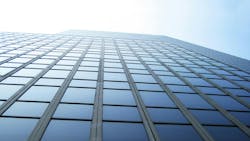How Commercial Window Tint Can Conserve Energy and Cut Costs
Efficiency and sustainability are increasingly urgent priorities for businesses. New York City’s Local Law 97, which fines owners of commercial buildings that exceed allowed levels of carbon emissions, is set to go into effect at the beginning of 2025, and many other cities have similar regulations pending.
That means that reducing carbon emissions is no longer simply a matter of sustainability. The potential economic costs of continuing to release carbon are driving organizations to look for affordable, easy-to-implement tools that help them manage energy consumption and meet carbon goals.
In addition, rising energy costs are an ongoing challenge for businesses, regardless of their industry or size. Companies that consistently and efficiently manage those costs can carve out a unique competitive advantage in their market. Commercial window tint is an often-overlooked solution for companies that are looking to meet sustainability goals and gain a market edge by cutting energy costs.
Window film for businesses is not simply a matter of style, comfort or security. Businesses that strategically employ window film can use less energy to provide the same level of comfort, even during the hottest months of the year.
How Can Window Film Save Money?
Studies show that effective window film can reduce energy consumption by 30% or more. Reducing the amount of light and heat that enter a building helps maintain lower temperatures. Window film blocks light (and harmful UV rays that can damage skin and furnishings) while also absorbing heat.
Those companies won’t just be reducing their own energy costs by installing commercial window tint. The energy required to power the world’s air conditioning is an enormous source of carbon emissions, so professionally installed window tint can help companies significantly reduce their carbon footprint.
Experts estimate that cooling systems account for 1,950 million tons of carbon dioxide released annually around the world, about 4% of the global total. Worldwide demand for cooling technology is also rising rapidly. The amount of energy spent on air conditioning is projected to triple by 2050. Reducing the amount of energy consumed to keep employees and customers comfortable can have a major impact amid that rising demand.
With the HVAC system working less to maintain the same cool temperature, the equipment will experience less wear and tear, potentially extending its service life. That provides further savings because of fewer repairs and longer times between equipment replacement.
What Are the Other Benefits of Window Tint in Buildings?
Those aren’t the only advantages of commercial window tint. Additional benefits include UV protection, comfort and security. Harmful UV rays are known to damage skin. Over time, they also damage interiors. Effective window tint blocks up to 99% of UV rays, protecting furniture, flooring, fabrics and other material from exposure.
At the same time, glare from sunlight can distract employees, visitors and customers. Commercial window film minimizes glare without blocking natural light to create a pleasant, productive environment. Window film also provides a variety of privacy and protection options, depending on the level of tint. Decorative films can obscure the view from one side without obstructing natural light on the other side. Some films can even enhance the structural integrity of the window, making it more resistant to shattering in case of accidents or break-in attempts.
Replacing existing windows is an option, if they’re older, poorly installed or poorly insulated. But commercial window tint can be a cost-effective alternative that extends the life of functioning windows while enhancing their ability to keep out light and heat.
Before installing commercial window tint, it’s important to consider the variables that will determine the right solution for your circumstances, such as the types of windows in the space, the size of the windows, the location of the building and the windows, and your budget.
Sustainability is good for business. Limiting carbon emissions and other impacts can build trust with customers and boost employee morale. Commercial window film can help organizations demonstrate their public commitment to environmental responsibility—and make a significant reduction in the cost of doing business.
About the Author
Charles J. Bonfiglio
Charles Bonfiglio is president and CEO of Tint World, a provider of automotive, residential, commercial, and marine window tinting and security film services. With Automotive Styling Centers in the U.S. and abroad, each franchise location houses approximately 20 profit centers, ranging from in-store accessory installations to offsite sales and installation.
